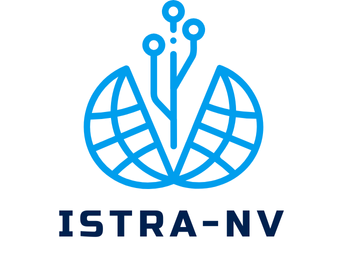As 2024 approaches, athletes face new challenges and opportunities in their training. Embracing cutting-edge technology, personalized nutrition, and mental wellbeing is essential for success. Prioritizing recovery strategies and adapting to evolving sports science can elevate performance. Discover innovative fitness tips designed to empower athletes at every level, ensuring you stay ahead in a competitive landscape. Prepare to rethink your approach and optimize your training for the year ahead.
Current Trends in Athletic Training
Exploring the dynamic landscape of fitness in 2024.
Also to discover : Sports Strategies for Success for Sustainable Growth
Emerging Fitness Trends
Athletic training is evolving rapidly, with fitness trends in 2024 focusing on holistic approaches. Athletes are increasingly turning to mindfulness practices like yoga and meditation to enhance mental resilience and physical performance. Additionally, wearable technology is becoming more sophisticated, offering real-time data to optimize workouts.
Social Media's Impact
The influence of social media on training practices cannot be overstated. Platforms like Instagram and TikTok are driving new fitness trends by showcasing innovative workouts and motivating athletes through virtual communities. This digital landscape allows for the rapid spread of training methodologies, making it easier for athletes to stay updated.
In parallel : How to Train Like a Pro for a Successful Year
Popular Workout Regimes
Several workout regimes are gaining popularity in 2024. High-Intensity Interval Training (HIIT) remains a favorite due to its efficiency and effectiveness. Functional training, which focuses on movements that mimic real-life activities, is also on the rise. Here's a quick look at popular regimes:
- HIIT
- Functional Training
- Mindfulness Practices
These fitness trends highlight the evolving nature of athletic training, driven by technology and social media. Athletes are encouraged to explore these options to enhance their performance and well-being.
Innovative Workout Strategies
Exploring advanced methods to elevate athletic performance.
HIIT Adaptations
High-Intensity Interval Training (HIIT) has evolved to meet the specific needs of athletes. By tailoring HIIT sessions, athletes can focus on sport-specific movements, maximizing performance. For example, a sprinter might incorporate short, explosive sprints into their HIIT routine, while a basketball player might focus on lateral movements. This adaptability allows HIIT to remain a cornerstone of advanced training techniques.
Functional Fitness Integration
Incorporating functional fitness into training routines is crucial for athletes seeking to improve real-world performance. By mimicking everyday movements, functional exercises enhance strength, flexibility, and coordination. Athletes can integrate exercises such as squats, lunges, and deadlifts into their routines, ensuring their training translates effectively into their sport.
Importance of Periodization
The role of periodization in maximizing performance cannot be underestimated. By strategically planning training phases, athletes can optimize recovery and peak at the right time. A well-structured periodization plan balances intensity and rest, reducing the risk of injury while enhancing overall performance.
- HIIT for sport-specific adaptations
- Functional fitness for real-world application
- Periodization for strategic training
These advanced training techniques offer athletes a comprehensive approach to improving their performance, ensuring they remain at the top of their game.
Nutrition Insights for Peak Performance
Elevating athletic performance through targeted nutrition strategies.
Latest Research on Macronutrient Ratios
Recent studies emphasize the importance of precise macronutrient ratios for athletes in 2024. Balancing carbohydrates, proteins, and fats is crucial for optimizing energy levels and recovery. For endurance athletes, a higher carbohydrate intake supports sustained energy. In contrast, strength athletes benefit from increased protein to aid muscle repair.
Significance of Hydration Strategies
Hydration strategies play a pivotal role in maintaining peak performance. Adequate fluid intake before, during, and after workouts prevents dehydration, which can impair athletic output. Electrolyte-rich drinks are recommended to replenish lost minerals and enhance endurance.
Popular Supplements and Evidence-Based Benefits
Athletes are increasingly turning to supplements to gain a competitive edge. Popular options include creatine for strength gains, branched-chain amino acids (BCAAs) for muscle recovery, and omega-3 fatty acids for reducing inflammation. Evidence supports their benefits when integrated into a balanced diet.
- Macronutrient ratios: Tailored for energy and recovery
- Hydration strategies: Essential for performance maintenance
- Supplements: Creatine, BCAAs, Omega-3s
Incorporating these athletic nutrition insights can significantly impact an athlete's performance, ensuring they remain competitive and healthy in their training endeavors.
Recovery Protocols for Athletes
Essential strategies to enhance athletic recovery and performance.
The Importance of Sleep
Sleep is a cornerstone of effective athletic recovery. It plays a vital role in muscle repair, memory consolidation, and hormone regulation. Athletes should aim for 7-9 hours of quality sleep to maximize recovery. Sleep deprivation can lead to decreased performance and increased injury risk. Prioritizing sleep hygiene, such as maintaining a consistent sleep schedule and creating a restful environment, is crucial for athletes.
Emerging Recovery Technologies
Innovative recovery technologies are transforming how athletes approach recovery. Devices like compression garments, cryotherapy, and electronic muscle stimulators are gaining popularity. These tools can enhance blood flow, reduce inflammation, and expedite muscle recovery. However, the effectiveness of these technologies varies, and athletes should consider their individual needs and consult professionals before integrating them into their routines.
Best Practices for Active Recovery
Active recovery involves low-intensity exercises that promote muscle recovery without adding stress. Activities such as swimming, cycling, and yoga can help maintain fitness levels while facilitating recovery. Incorporating active recovery into training routines can prevent overtraining and improve overall performance.
- Sleep: Essential for muscle repair
- Recovery technologies: Innovative but varied in effectiveness
- Active recovery: Supports fitness and recovery
These athletic recovery strategies provide a comprehensive approach to maintaining peak performance.
Technological Advancements in Training
Exploring the impact of sports technology in 2024.
Wearable Technology in Performance Tracking
Wearable technology is revolutionizing how athletes monitor their performance. Devices like smartwatches and fitness trackers provide real-time data on heart rate, calories burned, and even sleep patterns. This information allows athletes to tailor their training sessions, ensuring they maximize efficiency and effectiveness. The integration of wearable technology into daily routines is becoming indispensable for serious athletes aiming to optimize their performance.
Virtual and Augmented Reality in Training Environments
The emergence of virtual reality (VR) and augmented reality (AR) is transforming training environments. These technologies offer immersive experiences that simulate real-world scenarios, enhancing an athlete's ability to practice skills in a controlled setting. For instance, a soccer player can use VR to practice penalty kicks in various stadiums without leaving their home. The use of VR and AR in sports technology is set to expand significantly in 2024.
AI's Influence on Personalized Training Programs
Artificial Intelligence (AI) is shaping the future of personalized training programs. By analyzing an athlete's data, AI can create customized workout plans that adapt to their specific needs and goals. This AI-driven personalization ensures that athletes receive the most effective training, reducing the risk of injury and improving overall performance.
- Wearable technology: Real-time data tracking
- VR and AR: Immersive training experiences
- AI: Personalized training programs
These advancements highlight the pivotal role of sports technology in 2024, offering athletes innovative tools to enhance their training.
Mental Health and Performance
Exploring the connection between mental wellness and athletic success.
Strategies to Enhance Mental Resilience
Building mental resilience is crucial for athletes aiming to maintain peak performance. Techniques such as mindfulness meditation and cognitive behavioral strategies can empower athletes to manage stress effectively. These methods help in cultivating a positive mindset, essential for overcoming challenges both in training and competition.
The Impact of Stress Management on Performance
Effective stress management directly influences athletic performance. Athletes who develop skills to manage stress can maintain focus and composure under pressure. This involves recognizing stress triggers and implementing relaxation techniques such as deep breathing and visualization. These practices not only enhance performance but also contribute to overall mental wellness.
Techniques for Maintaining Focus During Competition
Staying focused during competition is vital. Techniques like goal setting and positive self-talk can help athletes concentrate on the task at hand. Additionally, creating a pre-competition routine can provide a sense of control and reduce anxiety. By integrating these strategies, athletes can improve their concentration and mental resilience.
- Mindfulness meditation: Enhances resilience
- Stress management: Critical for performance
- Focus techniques: Key to competitive success
These approaches underscore the importance of athlete mental wellness, ensuring athletes not only perform well physically but also thrive mentally.
Future Outlook for Athletic Training
Anticipating the evolution in sports training methodologies.
Predicted Shifts in Training Paradigms
The future of sports training is poised to undergo significant transformations. As technology advances, elite athletes will likely see a shift towards more data-driven and personalized training paradigms. The integration of artificial intelligence and machine learning will allow for precise adjustments to training regimens, enhancing performance and reducing injury risks. This evolution will redefine how athletes prepare and compete, emphasizing efficiency and effectiveness.
The Role of Community and Collaboration
Community and collaboration will become increasingly vital in the future of sports training. Athletes will benefit from shared knowledge and experiences, fostering a supportive environment that encourages growth. Collaborative platforms will enable athletes and coaches worldwide to connect, exchange insights, and develop innovative training techniques. This collective approach will be crucial in shaping the next generation of athletes.
Preparing for the Next Generation of Sports Innovations
To stay ahead, athletes must prepare for upcoming sports innovations. Embracing new technologies and methodologies will be essential in maintaining competitive edges. The focus will be on adaptability and openness to change, ensuring that athletes are ready to integrate cutting-edge tools into their routines.
- Data-driven training
- Collaborative platforms
- Adaptability to innovations











